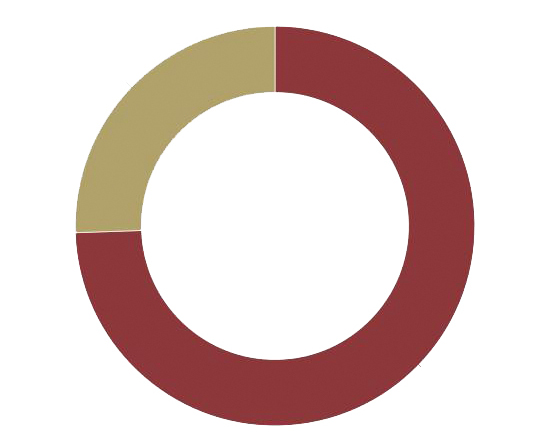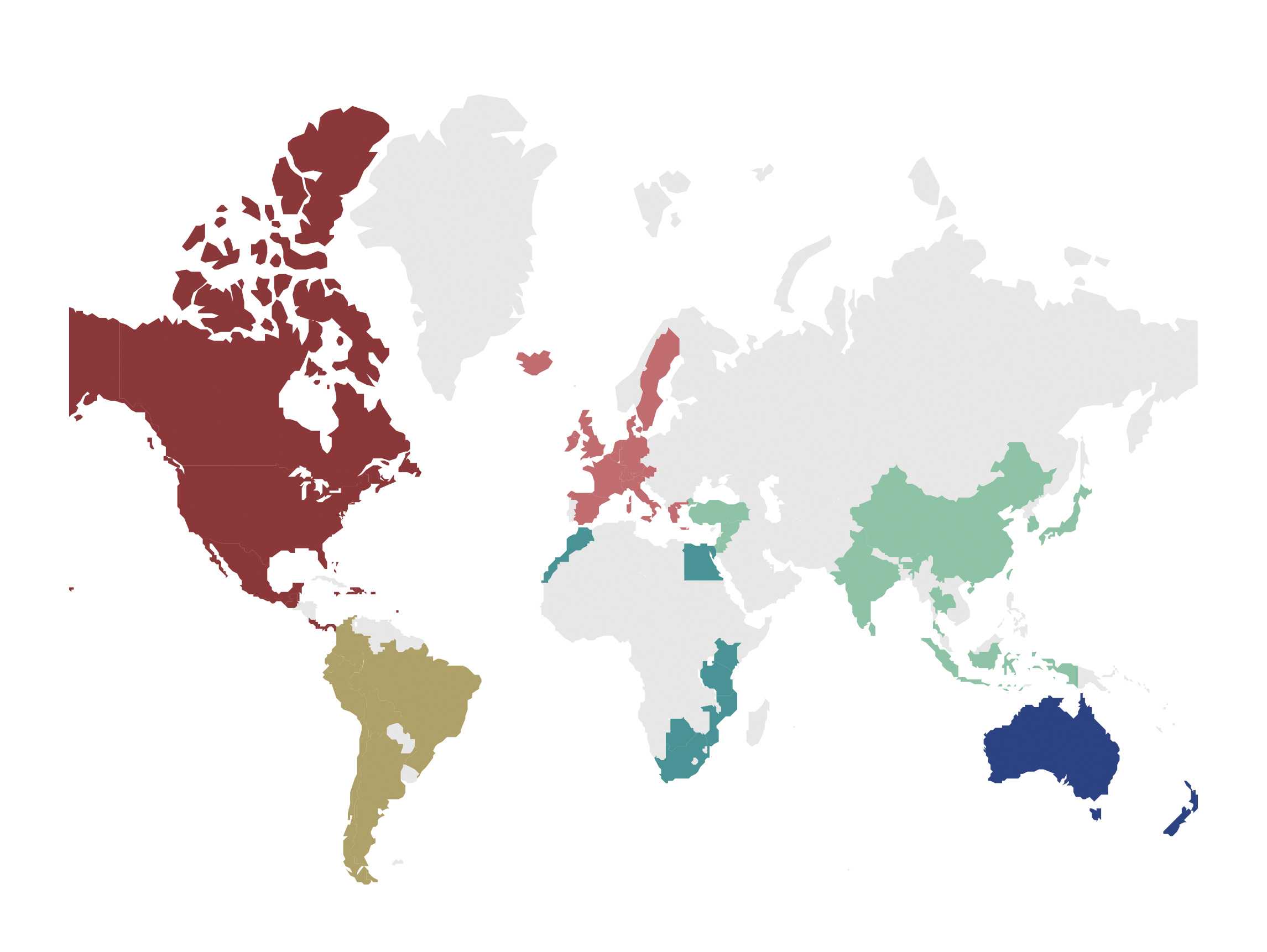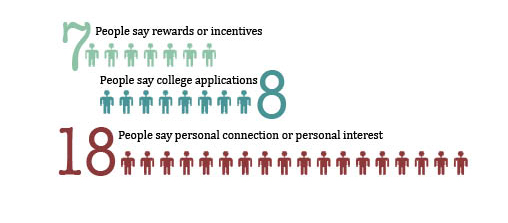International empathy, sympathy, and apathy
Exploring how mindsets around international issues and service effect action and giving.
March 10, 2016
Definitions
SYMPATHY
Sympathy seems to be a different portion of allyship as it is rooted in basic awareness and concern. “Sympathy is when you show concern for somebody else, but you are not able to connect with the issues on a personal level,” says Ellie Grossman ‘17.
Care and awareness are a great first step to creating change, but sympathy is just that: a first step. “Sympathy is just someone feeling bad for someone and recognizing someone else is facing hardship and is struggling, which is good but does not actually create any possibility for progress,” says Emily Moffa ‘16.
EMPATHY
Look at an issue, event, or person, become aware, become passionate, put your skin, heart, soul, and self completely in it: this is empathy. “Empathy fundamentally requires a person to try to understand how a person is feeling by essentially trying to step into their shoes,” says Moffa. “That may come from comparing their situation to a situation of their own, which allows a connection that bonds the empathizer and the empathized person through an almost mutual struggle.”
“Empathy is critical,” adds Elisa Lopez ‘19, “because it is essential to understanding others’ perspectives. It allows us to personally understand another’s perspective. This is vital because the presence of empathy allows us to build healthy relationships through shared understanding and making us more aware of how our own behavior affects the lives of others.”
APATHY
“I would define apathy as lacking emotion or feeling towards something,” says Jai Kademani ‘19. Apathy isn’t necessarily the opposite of sympathy or empathy, but just a lack of connection of feelings needed to attribute to human emotion.
“Apathy is when a person doesn’t have a personal connection with something, usually another person or an event, and this manifests as detachment from and lack of emotion towards that thing,” adds Kelly Brakken ‘17. “In some cases apathy can keep people from empathizing with each other’s experiences and, in general, an apathetic outlook on life and politics restricts potential for human connection and social change. In my opinion, it can be dangerous and lead people to prioritize only their own needs. Apathy restricts movement and productivity.”
What motivates the community
Spectrum sent out a survey asking the following questions:
“Which tactics do you think activate people to volunteer time? Which strategies activate them to donate money?”
Read some of the 126 responses below.
“Anything that makes the volunteer feel personally connected to the charity that they’re supporting. Something that makes them feel good about helping others, them knowing that they’re benefitting someone else.”
“I think if we engage people more by figuring out fun ways to donate money, rather than just going around asking people to donate to a specific cause, [people] will become more willing. Also I think people would like to know where their money is going, because there are time when I have no clue where my money is going for things like bake sales and I would like to know more about the organization.”
“Service should not be something to be recognized by an award, it should be recognized by the impact it makes on the global or local communities.”
“[College] applications, moral goodness, and tax breaks.”
“I think when people are educated and learn about situations locally and abroad, they gain empathy and feel the need to donate or volunteer.”
“I think when people have faith that they can make a genuine impact.”
“I have always felt responsibility to donate to charity and occasionally volunteer because of outreach from them. It is reassuring that as a teenager, you can at least fund people who are making real change in the world.”
Bake sale profits lead in fundraising efforts
Why bake sales tend to be more successful than other money raising campaigns.

The visual representation of money made at bake sales (red) versus other forms of fundraising (tan)
Bake sales dominate Blake community service fundraising. According to Lisa Sackreiter, Service Learning Coordinator, bake sales are responsible for $2,625 of the total $3,525 raised for service, or around 75%. The other $900 came from a $600 matching donation (to a bake sale’s $600) and a fundraiser selling water bottles and rafiki bracelets at Homecoming that generated $300.
Chris Chang ’19, a self-described “avid fan of bake sales” says “I think [bake sales] are good and are a good way to give money to other organizations and food to kids… Bake sales are cheap and people want to buy sweet food. I don’t know if there are any better ways to incentivize donations for high schoolers.”
Traditionally, bake sales will be set up at the bench next to the stairs in the senior lounge, vending a whole litany of baked goods that range from brownies to iced and sprinkled cookies. The causes that the bake sales represent also vary: funds have been raised for causes including supporting families facing cancer, helping victims of the Nepalese Earthquake in 2015, and ameliorating clean water sources in India.
Maria Orlandi ’16, a leader of Free the Children, a prominent service club that often holds bake sales and other fundraising events, says that “bake sales or fundraiser[s] where you’re selling a product of some sort like water bottles or t-shirts are the most reliable way to raise money from Blake students.”
A recently successful philanthropic endeavor was conducted by Jack Moe ’18 and Sam Shapiro ’18 when they conducted a bake sale at both the Upper and Middle schools to raise over $500 for the cause of supporting a Haitian basketball program. The money will go to buying some of the necessary gear for Haitian basketball players.
In regards to the actual success of the bake sale, Moe had something to say about the generosity of Blake students, too: “People were so generous that while we only sold five out of the six cartons of cupcakes, we raised more money than if we had just sold six cartons due to other donations that people made.”
Both Moe and Orlandi commented on the high frequency of bake sales, with both praising their ease to plan and surefire profits, but both also mentioned alternative ways to raise funds.
Specifically, Moe says, “We plan on having a fundraiser day where games like knocker ball are available and we also plan on selling t-shirts showing the logo of our non-profit in the making, Sprint to Cité Soleil.”
Orlandi elaborates, “Our other big method of raising money is our annual concert or spring event. This is definitely more exciting than doing a bake sale but it’s not as reliable because we really have to make sure that enough people will attend in order for it to be successful. Bake sales are low commitment and effort for students because there’s no planning in advance so I think that makes it much easier for [students] to participate. That’s the biggest obstacle with planning events like a concert, or the carnival that we’re doing this spring on May 7th. Getting students to make the commitment to come and participate is the hardest part.”
With the influx of community service groups this year, there has been a noticeable upswing in the amount of total bake sales at the Upper School. Orlandi comments, “it decreases the flexibility because we always have to be aware of the other events going on to make sure there’s not too many bake sales or fundraisers in a month.”
Moe says, “I think the most effective strategy is finding a topic that evokes emotion in people and finding something that evokes emotion in people because at the end of the day, any group can sell cupcakes, but people are going to buy more cupcakes if it’s a topic that they want to help out.
Shifting from psychic numbing
Fighting against a psychological phenomenon that affects perceptions of international crises.
We’re constantly busy internalizing various numbers: dates for history class, statistics for math, and equations for science. The unalarming and factual digits that we learn become engraved in our brains with little significance attached. However, we must also consider the numbers that mean more than just the number itself.
It’s reasonable to us that Ronald Reagan served as the U.S. president from 1981 to 1989 and that the probability of seeing a head after a standard coin flip is 1/2, or that force equals mass times volume. Despite our automatic acceptance of these standard facts, statistics, and equations, it’s so daunting to process the hundreds of thousands of murders from the Herero and Namaqua genocide, Al-Anfal Campaign, Bangladeshi genocide, Ustasha genocide, Rwandan genocide, and Cambodian genocide.
This amount of death is not easily accepted, and psychic numbing, the tendency for humans to ignore previous traumatic experiences due to an inability to comprehend the magnitude of the occurrences, is to blame.
Psychic numbing is what shifts our mindsets towards apathy and away from empathy.
It’s the reason that so many students and educated adults don’t know about the Srebrenica Massacre or the Bosnian Genocide, and it’s also the reason that a lot of us don’t do community service–the problem is too big to fathom.
There are certainly service-seeking individuals at school and around the globe, but there are also plenty of students who choose not to take action.
Spectrum spoke with students about the mindset behind their past decisions in relation to service. Charities that students have chosen to work with include Feed My Starving Children, the American Cancer Society, the World Wildlife Foundation, UNICEF, and Light of Hope, among many others. Reasons for engaging in service ranged from desiring to make a difference and help others to personal interest, religious or moral obligations, or padding for college applications.
Many students interviewed have travelled around the globe, but rarely in connection to service trips and charities. Less than fifteen students travelled for service out of more than 120 who vacationed in isolated, luxurious portions of countries. So many students are unable to grow and comprehend the suffering in countries such as Mexico or France because they only experience the secluded paradises that these countries have to offer.

Kendall Emfield ‘17, Maggie Eshmawy ‘17, Elie Oxford ‘19, Lauren Hastings ‘19, Clayton Rae ‘16, and Emily Kranendonk ‘18 regularly seek opportunities to help others through community service, some through overseas travels and some through local charities.
Emfield volunteers in Guatemala with Hearts in Motion. “We come from a place of having great opportunities and going to a really good school,” she says, “but not everyone has that and not everyone has a situation that can support them. So it’s important to give back to the community as you hope that the community will give back to you.”
The concept of giving back to the community is also reflected by Eshmawy, who regularly donates her time to the Humane Society, Op Camp, and the American Cancer Society, and has created a club called C.A.R.E. for cancer awareness. “The community service [students] do is within Blake to help lower school students or something and a lot of people don’t feel connected to that [form of service] because they feel that Blake is a privileged school and that we can be doing better.”
On an international level, Oxford has travelled to St. Lucia to teach students from third to sixth grade math and reading. While Oxford narrows in on education specifically, she also notes that “every student should be encouraged to [do service]. . . I think that some people view service as unnecessary because they think that other people are handling it. They also might view it as too large of a time commitment, but there are actually many different forms of service that have different time commitments. Few people know how a little service goes a long way, and if a lot of people chose to participate, it would greatly help whatever cause they are volunteering for.”
While each act of service that Oxford refers to is important, some global issues that students were once active in helping have a continued level of necessity without much sustained involvement by volunteers. In the fall, David Graham’s Global Communities classes raised $1,200 for Syrian refugees, but continued talks and support have dwindled since then. Empathy turned
to inaction while the global crisis continued.
It’s large-scale crises like this that create the phenomenon of psychic numbing. The size of the problem simply becomes overwhelming. The Syrian refugee crisis is a result of the ongoing Syrian Civil War, and while there was a lot of media attention to this crisis over the summer, both news outlets and students have touched on it less and less. This isn’t because the crisis has resolved itself, but because we neurologically lack the ability to comprehend the enormity of the situation.
13.5 million Syrians remain desperate for humanitarian assistance and 4.6 million of them are displaced internationally. In response to this, the United States only granted 1,869 refugees asylum in 2015. What do these numbers mean to you? Is it physically possible to internalize these data points? That so many people – 2.5 times the population of Minnesota – lack necessary aid, while the richest country in the world has taken in the equivalent of .000006 of its population in refugees, is staggering.
Hastings believes that the insufficient amount of assistance toward the Syrian refugee crisis is because “news coverage is lacking and it makes it seem like it’s not a problem.” Similarly, Rae explains that “a lot of people empathize with the Syrian refugees crisis. It’s not that we don’t care about these people, it’s just that there seems to be more pressing matters to some people.” Yet the reason why news coverage on the Syrian Refugee Crisis has declined is because the sheer scale of the issue can make people feel helpless, detached, and numb.
Psychic numbing is no excuse to resort to apathy, however. Count to ten; count to 100–there are human beings underneath those numbers. Apathy may seem easier, but it is detrimental to the person and the millions in need. When the problem feels so large that you are helpless, remind yourself of one: one person, one story, or one encounter, and keep your skin in the game.


